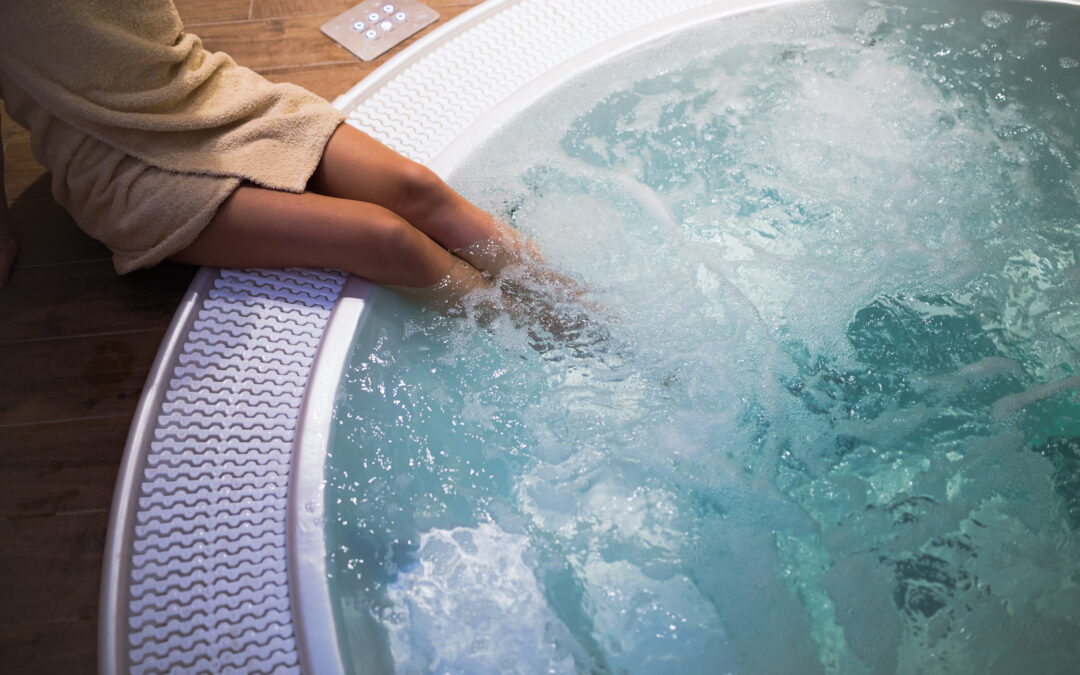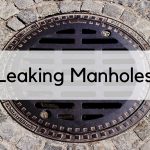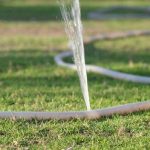Understanding Hot Tub and Pool Leaks
Water is persistent. Give it the tiniest exit route and it will find a way to escape. In a hot tub or pool, that means higher bills, wasted chemicals, and slippery hazards. A leak rarely stays small for long because water under pressure widens any crack it meets. The sooner you understand how leaks behave, the easier it is to stop them.
How Water Escapes From a Sealed Shell
Concrete pools can crack, fibreglass shells can blister, and vinyl liners can tear. Even a hair-thin gap lets water seep out. Once outside the shell, moisture erodes soil, weakens foundations, and may return through your basement wall.
Why Hot Tub and Pool Leaks Spread Fast Outdoors
Outdoor recreation areas face sun, wind, and temperature shifts every day. Expansion and contraction of materials create new stresses. Add in splash-out, backwashing, and enthusiastic children, and you have the perfect recipe for unnoticed losses.
Common Causes of Hot Tub and Pool Leaks
Knowing the likely culprits saves hours of guesswork.
Ageing Surfaces and Worn Grout
Tiles loosen over time. Grout shrinks and flakes away. Old silicone seals around jets become brittle. Each small flaw adds up to a steady drip.
Movement in Pipework After Temperature Swings
PVC pipes expand in the midday heat and shrink overnight. Joints may start to weep. Underground lines can shift when surrounding soil settles during heavy rain.
Equipment Failures: Pumps, Heaters, and Valves
A worn pump seal allows water to leak out while the system runs. A corroded heater union seeps when the metal cools. Multi-port valves can crack from ice in colder regions.
Early Warning Signs of Hot Tub and Pool Leaks
Catch leaks early and repairs stay affordable.
 Spotting Unusual Water Loss in 24 Hours
Spotting Unusual Water Loss in 24 Hours
Mark the water line with a piece of tape at night. Compare the level the next evening before anyone swims. A drop of more than 6 mm suggests a problem.
Algae Growth Where It Shouldn’t Be
See bright green streaks on exterior walls, decking, or nearby plant beds? Leaking chlorinated water feeds algae outside the shell.
What Sudden Chemical Imbalance Tells You
If chlorine demand soars or pH drifts without explanation, fresh water is entering from somewhere – or treated water is leaving.
DIY Detection Techniques for Hot Tub and Pool Leaks
Before calling an expert, a few simple checks can narrow the search.
The Simple Bucket Test
- Fill a bucket with pool water and place it on the first step.
- Mark the water inside and outside the bucket.
- Wait 24 hours with the pump off.
- If the outside level falls more than the inside, water is escaping.
Using Dye to Trace Hidden Cracks
Food colouring or specialised leak-detection dye works well.
Step-by-Step Dye Test Guide
- Turn pumps off to calm the water.
- Squirt dye near suspected gaps.
- Watch for colour being drawn into a crack like smoke.
- Mark the spot for repair.
Listening for Hissing or Gurgling Sounds
At night, stand close to equipment and shell walls. A faint hiss often points to a pressure leak. Gurgling suggests air is being sucked in through a break in a suction line.
When to Call Professional Leak Detectors
Some leaks sit deep in pipe runs or below thick concrete. Trained technicians bring advanced tools.
Equipment They Bring to Find Hot Tub and Pool Leaks
 Electronic amplifiers magnify sounds far beyond human hearing. Helium sniffers locate escaping gas injected into empty pipes. Specialists trace dye injected under pressure.
Electronic amplifiers magnify sounds far beyond human hearing. Helium sniffers locate escaping gas injected into empty pipes. Specialists trace dye injected under pressure.
Understanding Pressure Testing
By isolating each line and adding compressed air or water, a technician pinpoints which run drops in pressure. This saves unnecessary digging.
Thermal Imaging for Underground Lines
Infra-red cameras spot cooler soil where water soaks the ground. A narrow trench targets the exact point, reducing mess and expense.
Preventive Maintenance in Outdoor Recreation Areas
A little routine care keeps leaks at bay.
Weekly Checks That Stop Small Issues Becoming Major
Inspect Seals, Jets, and Tiles
 Run your finger around fittings. Any softness or missing grout needs attention.
Run your finger around fittings. Any softness or missing grout needs attention.
Keep an Eye on the Surrounding Deck
Puddles that do not dry or boards that warp hint at hidden seepage.
Seasonal Routines for Holiday Homes and Hotels
Shut down properly during low season. Drain lines, blow out water, and store pumps indoors if frost is likely.
Water Chemistry as a First Line of Defence
Balanced water prevents corrosion and swelling of liners. Test kits are cheap insurance.
Repair Choices and Cost Factors
Fixes range from a tube of sealant to full resurfacing.
Quick Fixes You Can Do in a Weekend
- Epoxy putty over a small crack.
- Replace an O-ring on a union.
- Tighten loose fittings.
Permanent Structural Repairs
A structural crack in a concrete pool often needs staples and hydraulic cement. Vinyl tears larger than a coin call for a new liner section.
Budgeting for Parts, Labour, and Downtime
Labour rates rise when crews must cut concrete. Factor water and chemical refills in large pools. Always compare the cost of repair with long-term running costs of ignoring the problem.
Protecting Your Investment Long-Term
Leaks cut lifespan and resale value. Future-proof your space.
Upgrading Old Kit Before It Fails
Modern variable-speed pumps run cooler, reducing gasket wear. New unions improve seals.
Leak-Smart Design for New Pools and Spas
Flexible PVC with proper bedding resists movement. Double-seal jets and skimmers stop seepage even if one seal breaks.
Educating Staff and Family on Good Habits
Show everyone how to spot damp patches, monitor water level, and note unusual sounds. Prompt reporting catches trouble early.
Hot tub and pool leaks rarely fix themselves. A mix of visual checks, simple tests, and timely professional help keeps your outdoor retreat safe, efficient, and enjoyable all year. Detect a leak quickly and you save water, money, and plenty of stress later on.
Frequently Asked Questions
Q1: How can I tell whether my pool is leaking or just losing water through evaporation?
A: Use the bucket test. Place a bucket filled with pool water on the first step, mark the water lines inside and outside, and leave it for 24 hours with the pump off. If the pool’s level drops more than the bucket’s, you likely have a leak rather than simple evaporation.
Q2: Is it safe to keep using a hot tub while it has a small leak?
A: It is unwise. Even a slow leak changes chemical balance, stresses the pump, and may damage electrics nearby. Shut the spa down, locate the fault, and repair it before regular use resumes.
Q3: How much does professional leak detection usually cost?
A: In the UK and the Gulf region, expect to pay between £200 – £500 for standard detection on a domestic pool or spa. Prices rise if technicians need to pressure-test underground pipe runs or break concrete to expose lines.
Q4: Can leak-sealing additives poured into the water solve the problem permanently?
A: Additives may seal microscopic pinholes, but they rarely fix structural cracks or failing pipes for long. Treat them as a temporary measure until a proper mechanical or structural repair is carried out.
Q5: How often should I inspect my outdoor pool or spa to prevent leaks?
A: Perform a quick visual check each week, carry out a thorough inspection of seals, tiles, and fittings every month, and schedule a full professional survey once a year if the pool is heavily used or critical to business operations.





